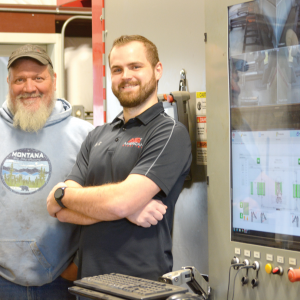By Bethany Blankley, The Centre Square
The number of individuals who filed for unemployment benefits last week increased to 742,000, the first increase in five weeks, according to new data published by the U.S. Department of Labor.
The number of people who filed for state unemployment benefits in the week ending Nov. 13 grew by 31,000 from the previous week’s revised level of 711,000, according to the Nov. 19 report.
In October, the U.S. gained 638,000 jobs and the national unemployment rate fell to 6.9 percent compared to the near historic high of a 14.7 percent at the peak during state lockdowns, when weekly jobless claims hit a record 6.9 million in March.
he previous week’s unemployment level was revised up by 2,000 from 709,000 to 711,000. The four-week moving average was 742,000, a decrease of 13,750 from the previous week’s revised average, the department stated in a news release accompanying the data. The previous week’s average was revised up by 500 from 755,250 to 755,750.
The unemployment rate drop “can be attributed in part to the fact that a lot more businesses are open now than were a few months ago, as states have gradually loosened restrictions,” Adam McCann, financial writer at WalletHub, says. “In addition, many people who became unemployed during the COVID-19 crisis were temporarily laid off, and either have already been rehired by their former employers or expect to be eventually.”
According to an analysis of unemployment data by the personal finance website, some state’s employment rates have bounced back more than others.
WalletHub compared all 50 states and the District of Columbia across four key metrics. It reviewed the change in each state’s unemployment for the month of October and compared it to data from October 2019 and January 2020. The analysis also compared continued claims in October 2020 to October 2019 and each state’s overall unemployment rate.
States in which employment rates bounced back the most were Iowa, Nebraska, Vermont, Missouri, South Dakota, Montana, Utah, Minnesota, Alaska and South Carolina.
States whose unemployment numbers were still suffering were Arizona, Maryland, Massachusetts, the District of Columbia, New Mexico, New York, California, Louisiana, Nevada and Hawaii.
According to the Department of Labor, the highest insured unemployment rates in the week ending Oct. 31 were in California (8.3), Hawaii (8.3), New Mexico (8.0), Nevada (7.6), Georgia (6.5), Pennsylvania (6.4), Alaska (6.2), Massachusetts (6.2), District of Columbia (6.0), and Illinois (5.7).
The largest increases in initial claims for the week ending Nov. 7 were in Washington (+7,683), California (+5,293), Massachusetts (+3,383), Alabama (+1,704), and Louisiana (+1,626).
The largest decreases were in Georgia (-13,426), Illinois (-6,357), Kentucky (-4,830), Texas (-3,934), and New Jersey (-3,725).

